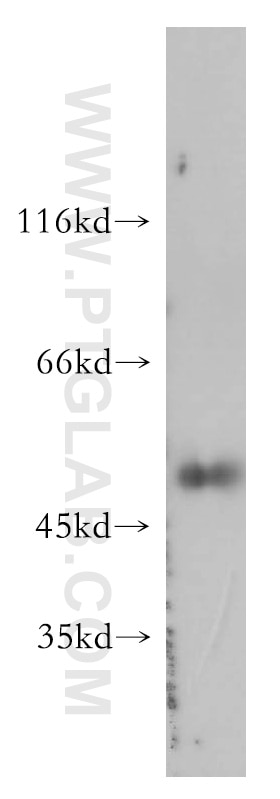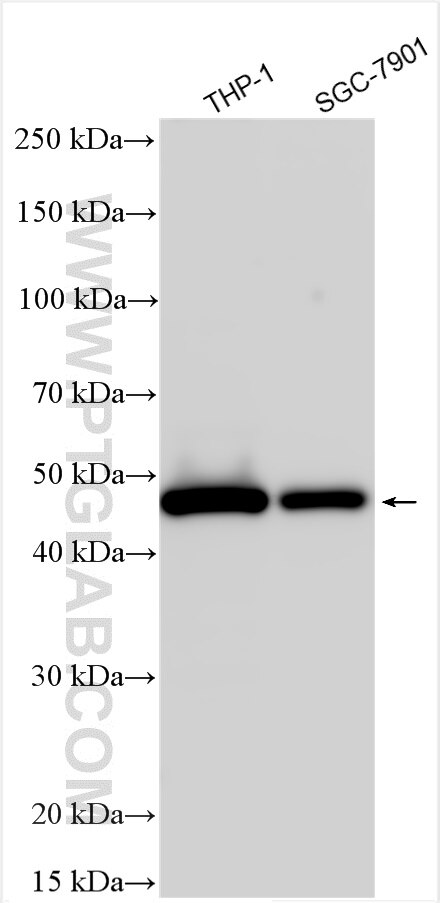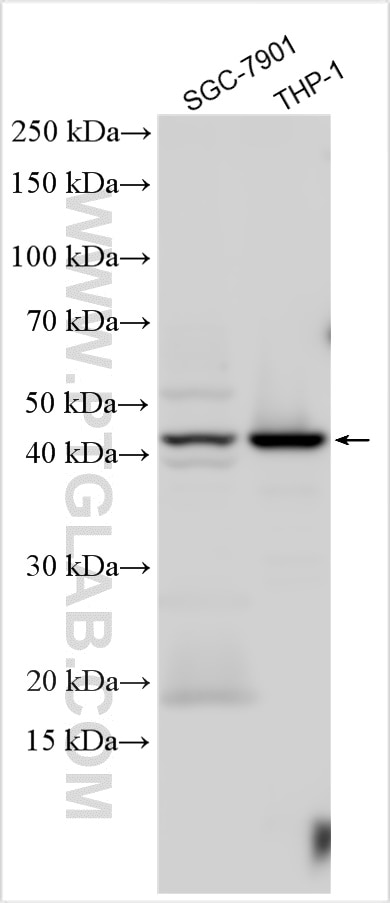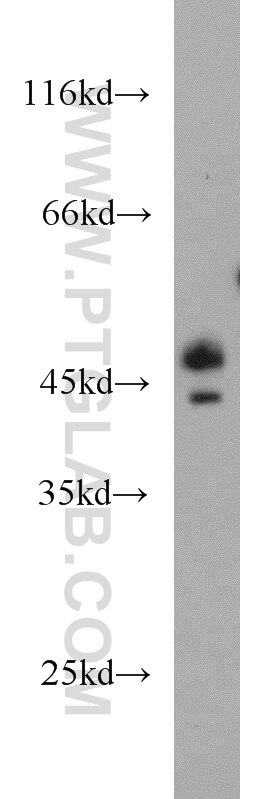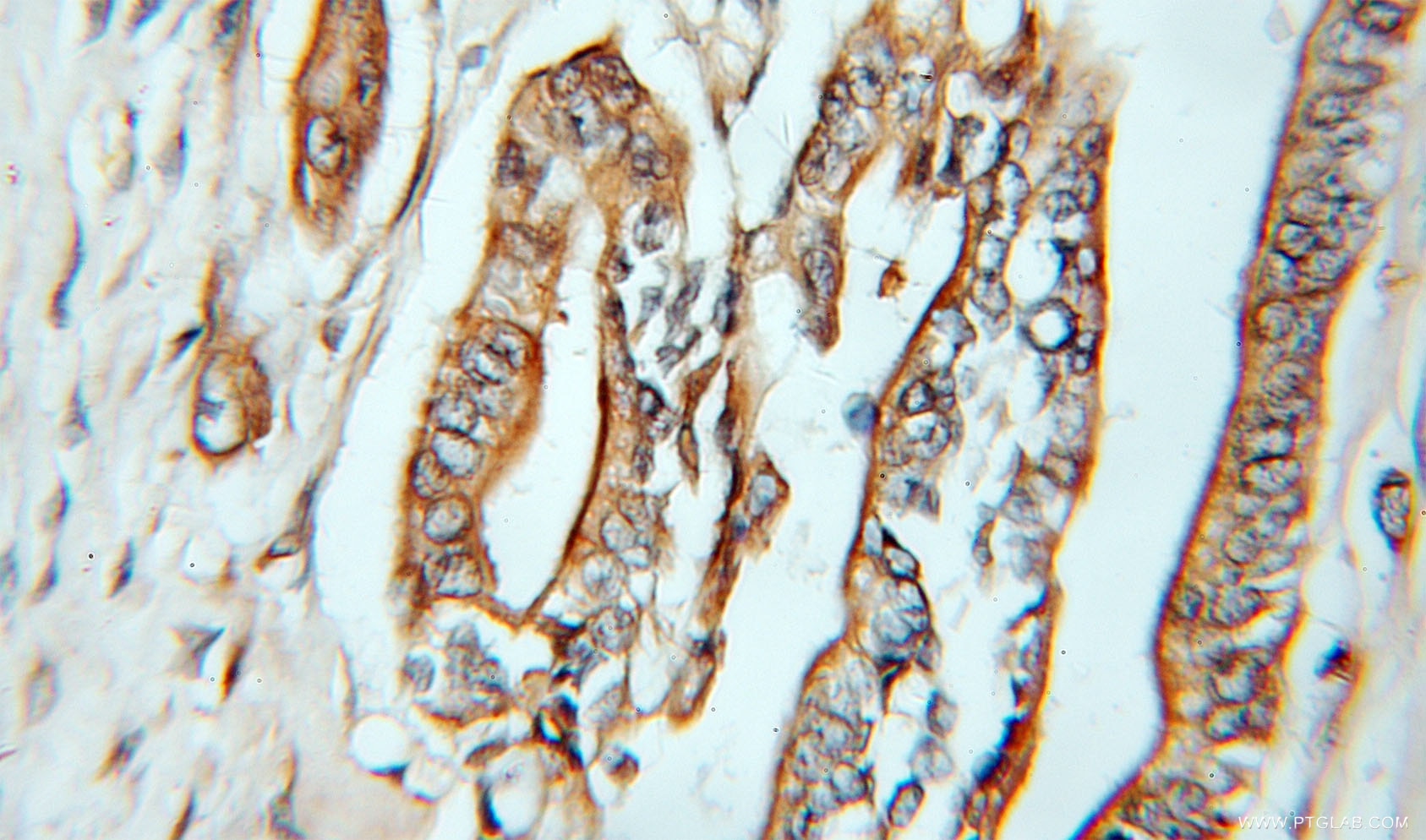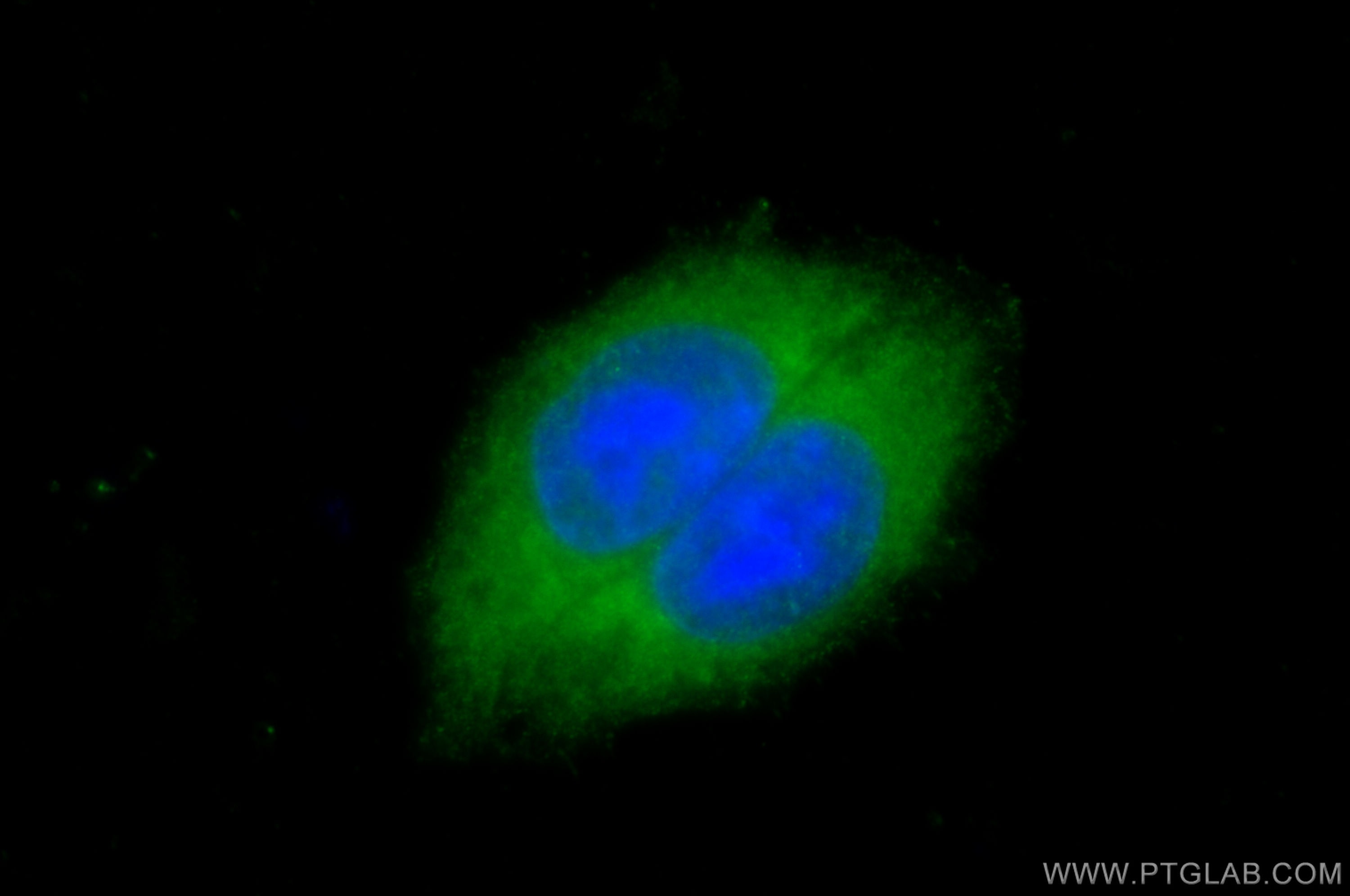- Phare
- Validé par KD/KO
Anticorps Polyclonal de lapin anti-Caspase 4/P20/P10
Caspase 4/P20/P10 Polyclonal Antibody for WB, IHC, IF/ICC, ELISA
Hôte / Isotype
Lapin / IgG
Réactivité testée
Humain et plus (1)
Applications
WB, IHC, IF/ICC, ELISA
Conjugaison
Non conjugué
N° de cat : 11856-1-AP
Synonymes
Galerie de données de validation
Applications testées
| Résultats positifs en WB | cellules SGC-7901, cellules THP-1 |
| Résultats positifs en IHC | tissu de cancer du pancréas humain il est suggéré de démasquer l'antigène avec un tampon de TE buffer pH 9.0; (*) À défaut, 'le démasquage de l'antigène peut être 'effectué avec un tampon citrate pH 6,0. |
| Résultats positifs en IF/ICC | cellules HepG2, |
Dilution recommandée
| Application | Dilution |
|---|---|
| Western Blot (WB) | WB : 1:500-1:1000 |
| Immunohistochimie (IHC) | IHC : 1:20-1:200 |
| Immunofluorescence (IF)/ICC | IF/ICC : 1:200-1:800 |
| It is recommended that this reagent should be titrated in each testing system to obtain optimal results. | |
| Sample-dependent, check data in validation data gallery | |
Applications publiées
| KD/KO | See 3 publications below |
| WB | See 14 publications below |
| IHC | See 2 publications below |
| IF | See 1 publications below |
Informations sur le produit
11856-1-AP cible Caspase 4/P20/P10 dans les applications de WB, IHC, IF/ICC, ELISA et montre une réactivité avec des échantillons Humain
| Réactivité | Humain |
| Réactivité citée | rat, Humain |
| Hôte / Isotype | Lapin / IgG |
| Clonalité | Polyclonal |
| Type | Anticorps |
| Immunogène | Caspase 4/P20/P10 Protéine recombinante Ag2429 |
| Nom complet | caspase 4, apoptosis-related cysteine peptidase |
| Masse moléculaire calculée | 377 aa, 43 kDa |
| Poids moléculaire observé | 43-48 kDa |
| Numéro d’acquisition GenBank | BC017839 |
| Symbole du gène | Caspase 4 |
| Identification du gène (NCBI) | 837 |
| Conjugaison | Non conjugué |
| Forme | Liquide |
| Méthode de purification | Purification par affinité contre l'antigène |
| Tampon de stockage | PBS with 0.02% sodium azide and 50% glycerol |
| Conditions de stockage | Stocker à -20°C. Stable pendant un an après l'expédition. L'aliquotage n'est pas nécessaire pour le stockage à -20oC Les 20ul contiennent 0,1% de BSA. |
Informations générales
Caspase 4 (CASP4), is a member of the cysteine-aspartic acid protease (caspase) family. Sequential activation of caspases plays a central role in the execution-phase of cell apoptosis.Caspase 4 is able to cleave and activate its own precursor protein, as well as caspase 1 precursor. Overexpression of caspase 4 will induce cell apoptosis.
Protocole
| Product Specific Protocols | |
|---|---|
| WB protocol for Caspase 4/P20/P10 antibody 11856-1-AP | Download protocol |
| IHC protocol for Caspase 4/P20/P10 antibody 11856-1-AP | Download protocol |
| IF protocol for Caspase 4/P20/P10 antibody 11856-1-AP | Download protocol |
| Standard Protocols | |
|---|---|
| Click here to view our Standard Protocols |
Publications
| Species | Application | Title |
|---|---|---|
Front Immunol Crosstalk of necroptosis and pyroptosis defines tumor microenvironment characterization and predicts prognosis in clear cell renal carcinoma
| ||
Front Microbiol Porphyromonas gingivalis-Induced NLRP3 Inflammasome Activation and Its Downstream Interleukin-1β Release Depend on Caspase-4. | ||
Front Microbiol Enterovirus 71 Induces INF2 Cleavage via Activated Caspase-2 in Infected RD Cells. | ||
Arch Biochem Biophys GSDMB involvement in the pathogenesis of abdominal aortic aneurysm through regulation of macrophage non-canonical pyroptosis | ||
Oral Dis Palmitic acid induces GSDMD-mediated pyroptosis in periodontal ligament cells via the NF-κB pathway | ||
J Diabetes Investig VX-765 ameliorates renal injury and fibrosis in diabetes by regulating caspase-1-mediated pyroptosis and inflammation. |
Avis
The reviews below have been submitted by verified Proteintech customers who received an incentive for providing their feedback.
FH Shan (Verified Customer) (07-10-2025) | The antibody works good when tested by western blot.
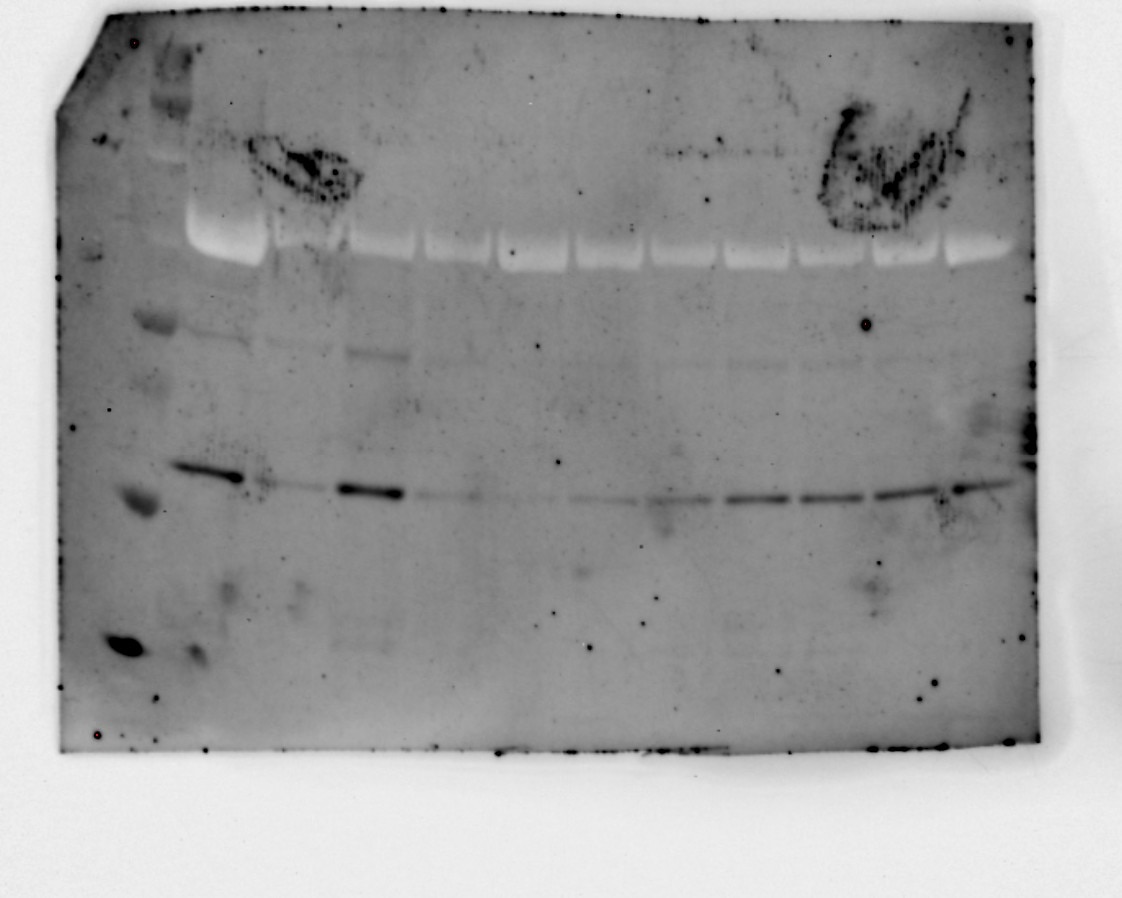 |
